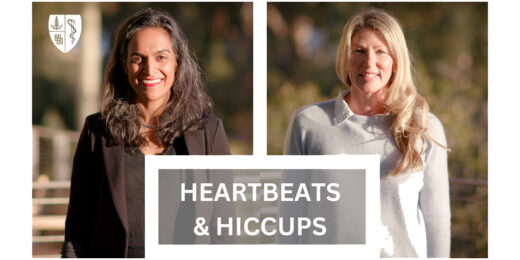This story contains mention of sexual assault.
Growing up in the town of Port Isabel, Texas, Janelle Chavez, a fourth-year Stanford School of Medicine medical student, witnessed how a lack of access to care affected her family and neighbors. The Rio Grande Valley has a physician-patient ratio far below the national average, and its residents suffer from high rates of diabetes, obesity and cancer. Chavez became inspired to do something about it.
From her time as an undergraduate at the University of Texas at Austin investigating cancer care inequities, through her recent experiences working with migrant families at the U.S.-Mexico border with the Families at the Border program, part of Stanford Medicine's Center for Innovation in Global Health, Chavez has channeled her passion for health equity into advocacy, communication and technology initiatives.
Chavez spoke about her drive and the insights she gained from the academic and volunteer work she's done to address inequities.
How did your childhood experiences shape your commitment to increasing access to quality medical care for underserved populations?
The Rio Grande Valley of Texas is marked by high rates of poverty and a lack of access to care, qualified providers and medical insurance. It's common for patients to drive hundreds of miles to see specialists or wait months for a physician to visit the isolated clinic in Port Isabel.
I saw how difficult it was for my grandparents, who immigrated from Mexico in the 1950s, to navigate the geographic and language barriers to getting care. I also recognized the negative impact those barriers had on my whole community. For instance, cervical cancer and its mortality rates are about 55% higher in the Rio Grande Valley than in the U.S. as a whole -- a result of low human papilloma virus vaccination rates, little access to preventive care, and a lack of specialists to detect and treat the disease.
Describe some of the volunteer work you've done in Spanish-speaking communities.
As an undergraduate, I volunteered in Peru and the Dominican Republic with a global nonprofit that offered free medical and dental care. We trained in medical Spanish to improve our cultural understanding of, and communication with, people in those communities. We worked in extremely isolated areas, helping doctors care for up to roughly 700 patients a week. There was a strong emphasis on communication and prevention.
Through Families at the Border, I've traveled to refugee clinics in Tijuana, Mexico, to work alongside Stanford Medicine clinicians and researchers to not only treat patients but also improve access to health care.
With Kay Daniels, MD, a clinical professor of obstetrics and gynecology, I helped care for women refugees, offering routine testing, such as pelvic exams and screening for urinary tract infections. We also provided prenatal care, using the clinic's handheld ultrasound to give a migrant woman her first glimpse of her baby, for instance.
On a separate project with Stanford Medicine surgeons Sherry Wren, MD, and Lisa Knowlton, MD, I helped evaluate access to hospitals and outcomes of emergency surgery along the U.S.-Mexico border. With Stanford Medicine surgeons David Spain, MD, and Jeff Choi, MD's team, I analyzed national data from trauma centers, focusing on geographic, racial and ethnic disparities in care access.
What have you learned most from these experiences?
I've learned so much about global issues and the plight of migrants seeking asylum in the United States. Many individuals make dangerous journeys of thousands of miles, often face violence and sexual assault, and have little to no access to medical care.
I've witnessed the ways geography, language differences and lack of financial means create barriers to health care. I see, unfortunately, inadequate knowledge of prevention and how that leads to higher disease burden. But in Tijuana, the Dominican Republic and Peru, I've also seen immense resilience among Latino communities that are under-resourced and underserved.
As a Stanford Global Health Media fellow, you've highlighted stories of patients and health care providers in Tijuana. What do you see as a physician's role in regard to advocacy and storytelling?
One of the goals of Families at the Border is to raise awareness about what's happening at these refugee clinics. The topic of immigration can be touchy. But for people who have been there, seen the patients, heard what they go through, and realized the basic need for medical care and support, there's a duty to share those experiences. For instance, I saw a patient who complained of uterine bleeding, but later revealed that she experienced sexual assault. What kept her going, she said, was the thought of reuniting her three children with family in Florida.
There's such a need for listening with empathy, patience and approaching a difficult subject when patients are ready and willing to disclose. It's critical to treat all patients, especially the most vulnerable, with high-quality care, compassion and dignity.
Although we may not have the same life experiences as our patients, we better serve them when we try to understand their perspective. Learning about patient culture, values and preferences through humility and curiosity is essential for quality care and advancing equity.
Photo by Matt Gush






